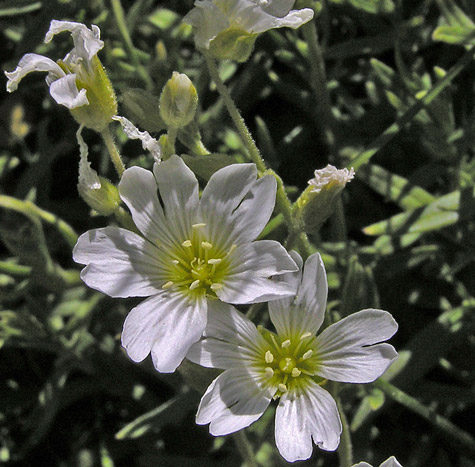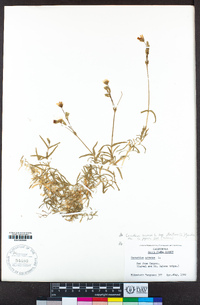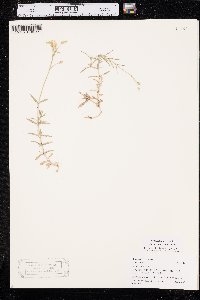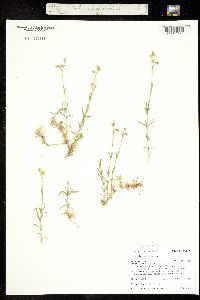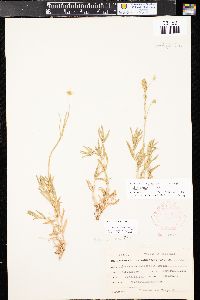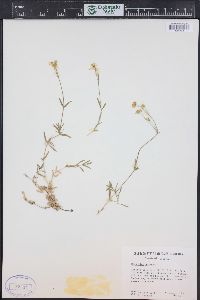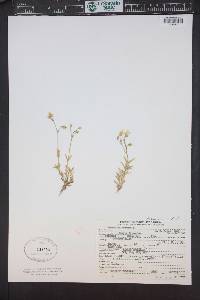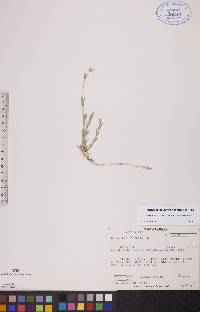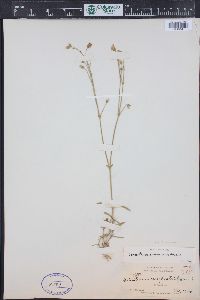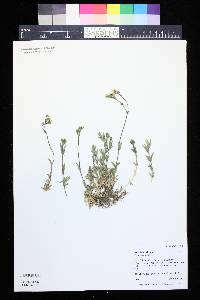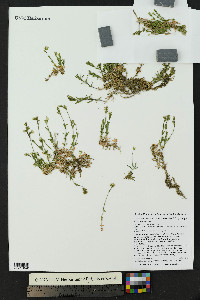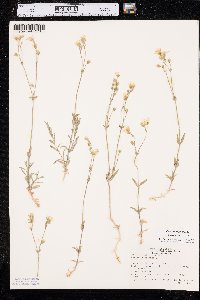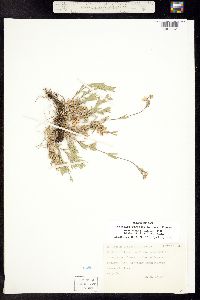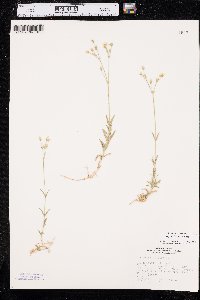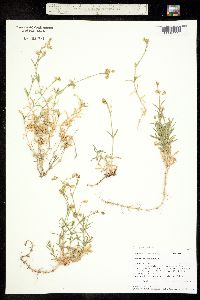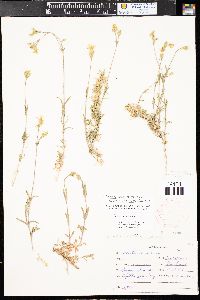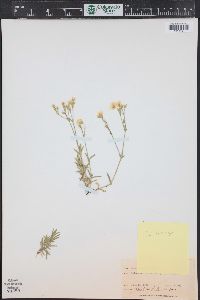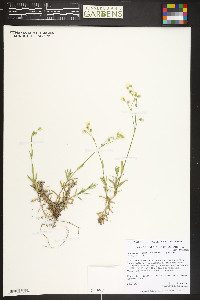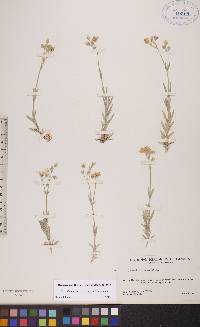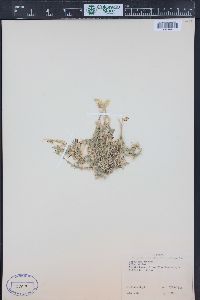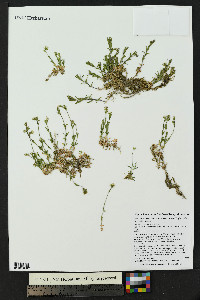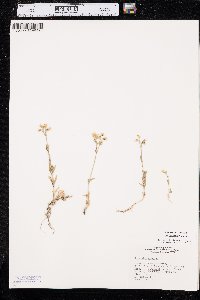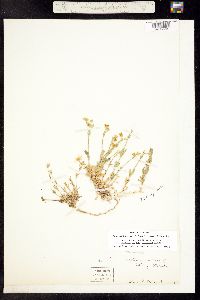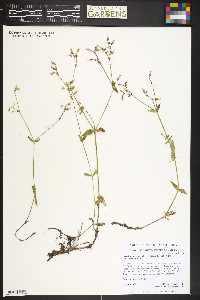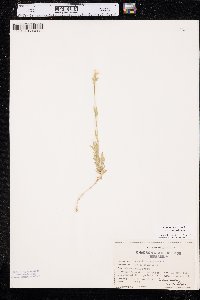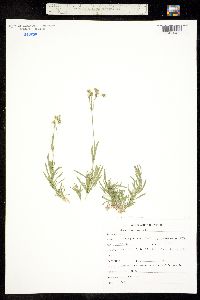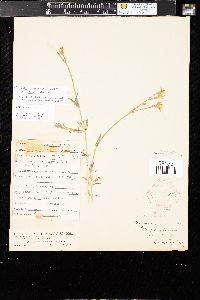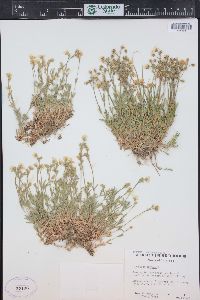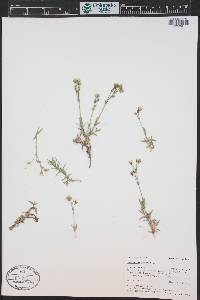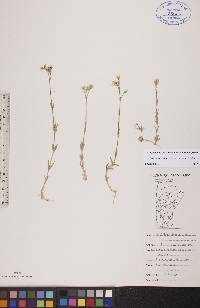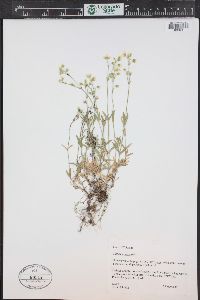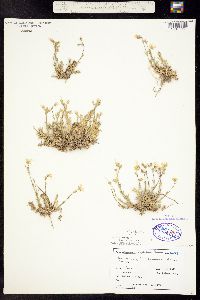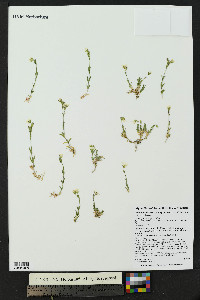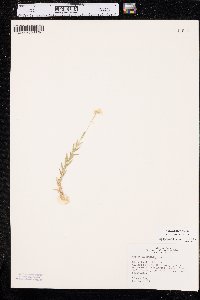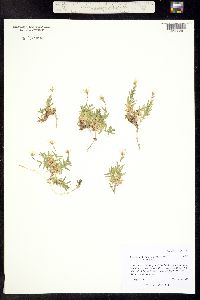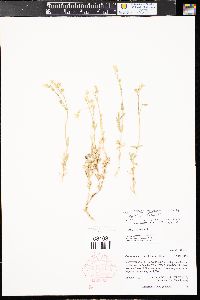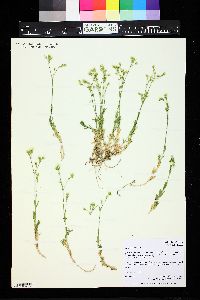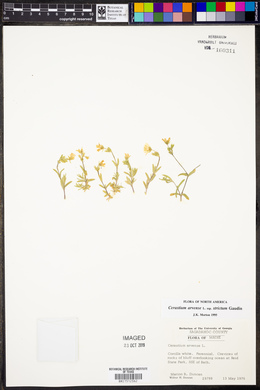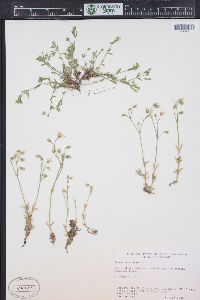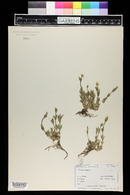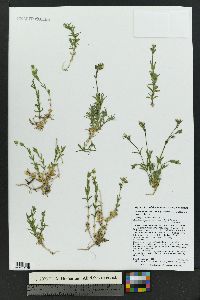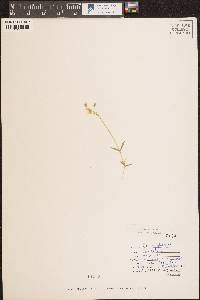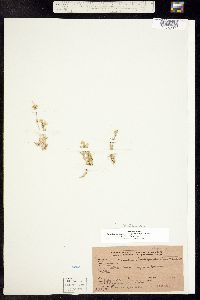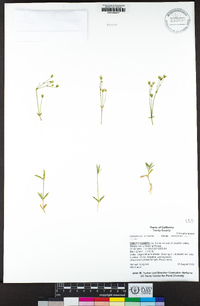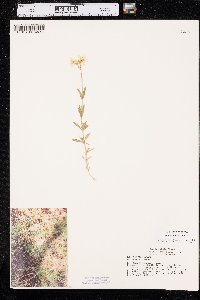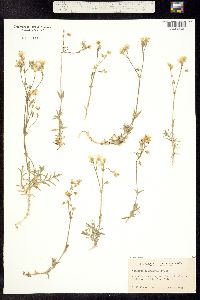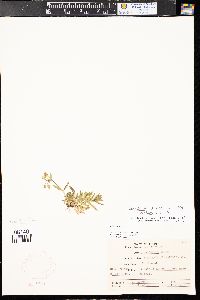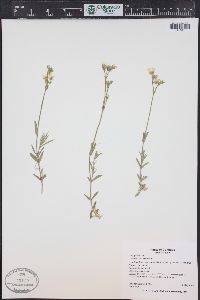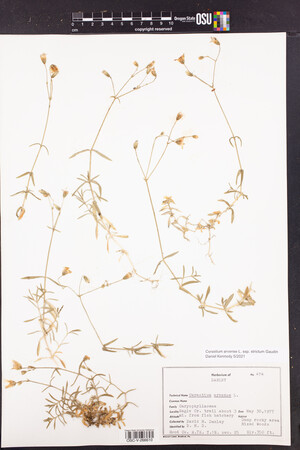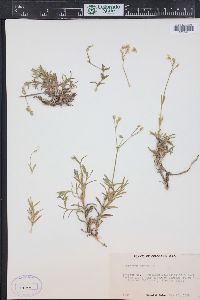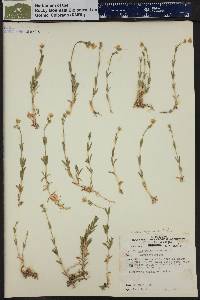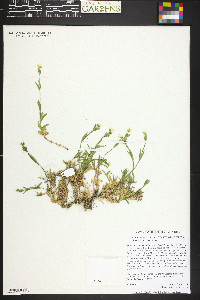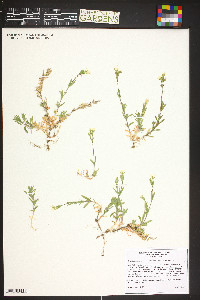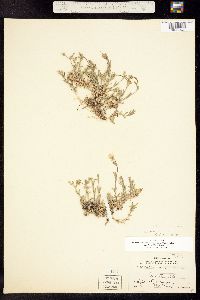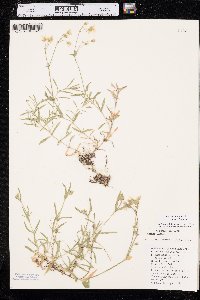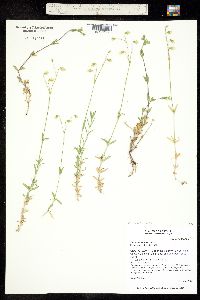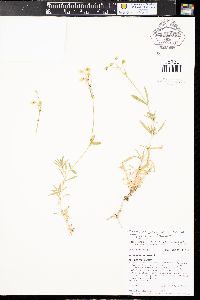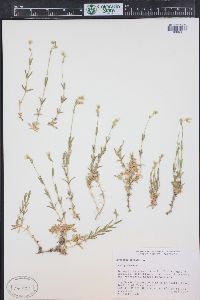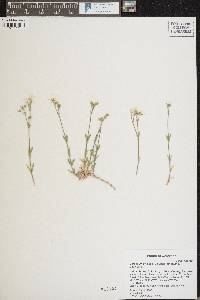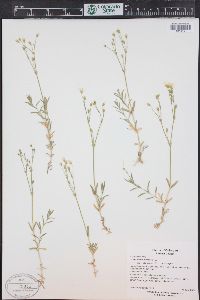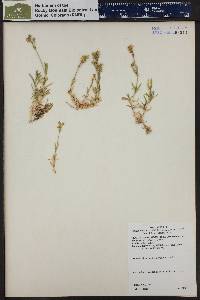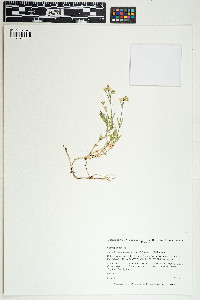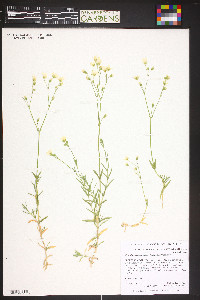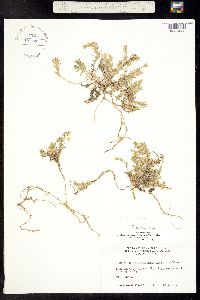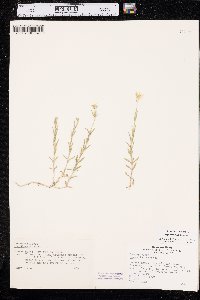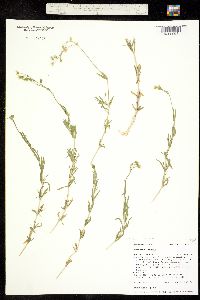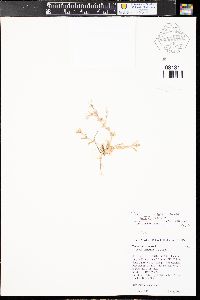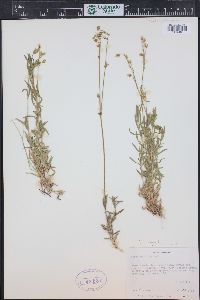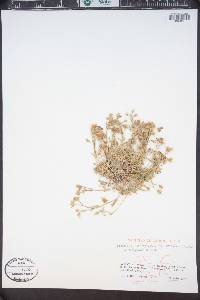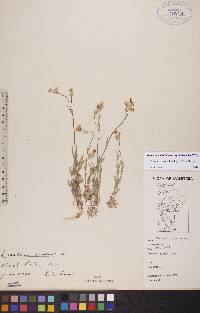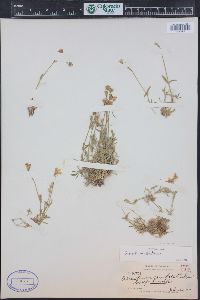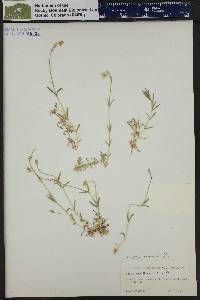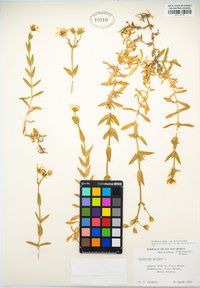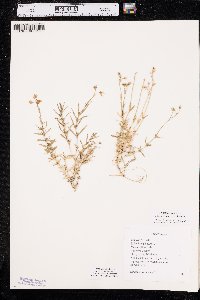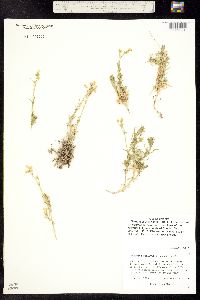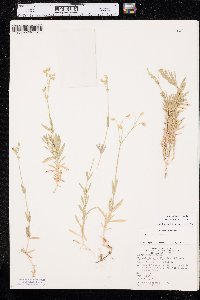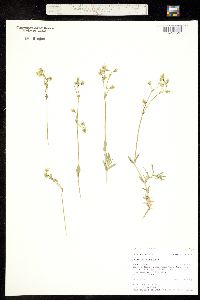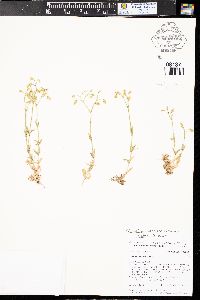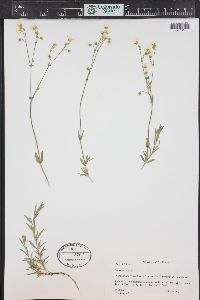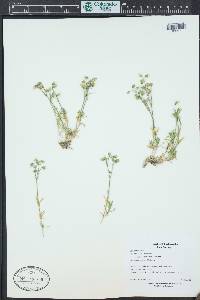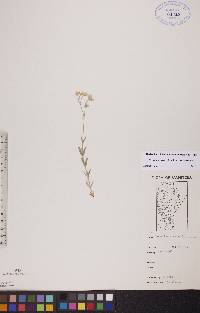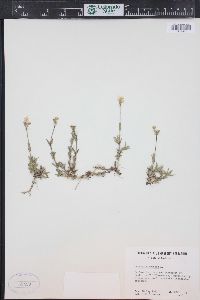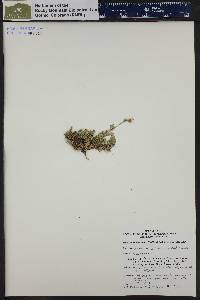Cerastium arvense subsp. strictum
|
|
|
|
Family: Caryophyllaceae
Field Mouse-Ear Chickweed
[Cerastium alsophilum Greene, moreCerastium angustatum Greene, Cerastium arvense var. angustifolium Fenzl, Cerastium arvense var. latifolium Fenzl, Cerastium arvense var. purpurascens Boivin, Cerastium arvense var. viscidulum Gremli, Cerastium campestre Greene, Cerastium confertum Greene, Cerastium effusum Greene, Cerastium elongatum Pursh, Cerastium graminifolium Rydb., Cerastium latifolium Fenzl, Cerastium leibergii Rydb., Cerastium nitidum Greene, Cerastium occidentale Greene, Cerastium oreophilum Greene, Cerastium patulum Greene, Cerastium scopulorum Greene, Cerastium sonnei Greene, Cerastium strictum L., Cerastium subulatum Greene, Cerastium tenuifolium Pursh, Cerastium vestitum Greene] |
Plants forming clumps or mats, rhizomatous, or tufted, taprooted; straggling, creeping shoots usually not well developed. Stems: flowering stems decumbent at base, usually green or straw colored, occasionally purple tinged (in some populations growing on serpentine rocks), 5-20(-30) cm, pubescent and often glandular distally, hairs patent or deflexed; nonflowering winter shoots, when present, elongating, with narrow, oblanceolate leaves; small axillary tufts of leaves always present. Leaves usually not strongly dimorphic; blade lanceolate or oblanceolate to linear, 2-25 × 1-5 mm. Flowers: sepals 3.5-6(-7) mm, midrib visible; petals 7.5-9 mm (-12 mm in western plants), usually remaining ± white when dried; anthers 0.8-0.9 mm. Capsules 7.5-11 × 2.5-4 mm, usually less than 1.5 times as long as sepals, rarely longer. Seeds 0.6-1.1 mm. 2n = 36. Flowering spring. Prairie grasslands, roadsides, arctic and alpine tundra, shores, dunes and rocky plains, rocky outcrops, alvars, sea cliffs and banks, favoring neutral to alkaline soils; 0-3800 m; Greenland; St. Pierre and Miquelon; Alta., B.C., Man., N.B., Nfld. and Labr., N.W.T., N.S., Nunavut, Ont., P.E.I., Que., Sask., Yukon; Alaska, Ariz., Calif., Colo., Conn., Idaho, Ind., Iowa, Maine, Md., Mass., Mich., Minn., Mo., Mont., Nebr., Nev., N.H., N.J., N.M., N.Y., N.Dak., Ohio, Oreg., Pa., S.Dak., Utah, Vt., Va., Wash., W.Va., Wis., Wyo.; Europe (Alps); South America (s to Tierra del Fuego). Subspecies strictum is widely distributed and grows in a great diversity of habitats, making it difficult to circumscribe and distinguish, both from subsp. arvense and from forms of Cerastium beeringianum, C. velutinum, and C. viride. Forms of subsp. strictum growing at high elevations or latitudes often develop broader leaves and may be confused with C. beeringianum (S. J. Wagstaff and R. J. Taylor 1988). However, C. arvense always has small axillary tufts of leaves. In northern parts of the Ungava region of Labrador, subsp. strictum appears on occasion to intergrade with C. alpinum. The status of these plants is uncertain. Subspecies strictum is a remarkably variable taxon. Plants from the western side of the continent often have larger petals and a ranker growth. Completely glabrous plants (var. ophiticola) occur on serpentine in southern Quebec. Plants with broader ovate-elliptic leaves and tomentose pubescence (similar to Cerastium velutinum var. villosissimum but smaller) occur in the same area. Populations on the limestone plains near Belleville, southern Ontario, are more robust, with broader, strongly marcescent leaves at the base and a woolly pubescence. Plants from river valleys in Idaho tend to be much larger, with long, very narrow leaves; these are the basis for the name C. graminifolium. However, all of these plants are completely interfertile and show no reduction in fertility when crossed. Most of this variation is under genic control but also is affected by environmental factors. Subspecies strictum is not interfertile with subsp. arvense or with other similar taxa such as Cerastium beeringianum, C. velutinum, and C. viride. Differences in chromosome numbers present an effective barrier to interfertility. However, several sterile hybrids involving subsp. strictum and those species have been synthesized. Many workers, most recently R. E. Ugborogho (1977), have included C. velutinum and C. viride in C. arvense as varieties or subspecies. However specific status is more appropriate because of the strong sterility barriers between them and the presence of morphological characters that enable them to be distinguished, albeit with difficulty in some herbarium material. This difficulty arises from the remarkable degree of variation displayed by subsp. strictum.
From Flora of Indiana (1940) by Charles C. Deam It is to be expected that this plant with a distribution throughout Europe and Asia and in North America would show a wide variation. Under this name are included many forms. Some European authors have divided this species complex into several subspecies. American authors have divided it into at least 4 varieties while others do not divide it. Cerastium arvense var. oblongifolium has been reported from Indiana but the habitat ascribed to this variety precludes its appearance in Indiana. This variety is not well described so I am omitting it. Fernald & Wiegand in their article cited at the beginning of this genus said the species is a complex which they were not willing to divide. It is probable that when a larger series of specimens and more notes are at hand the forms can be delimited. In Indiana there are two well-defined forms and it seems best to assign one to the species and separate the other from it. I have included under the species name our larger and glandular plant which has the distribution shown on the map. These plants were found in large colonies on the alluvial banks of the Mississinewa, Salamonie, and Wabash Rivers. The two northern locations belong to the glabrous form of the species. The species and its varieties are found in the northern hemisphere around the world. Cerastium undetermined. I have two specimens of this form which I found on high, wooded and gravelly banks of the St. Joseph River in Elkhart and St. Joseph Counties. This plant is strikingly different and has a dry soil habitat instead of a moist one. It is represented by my nos. 38515 and 38540. |

